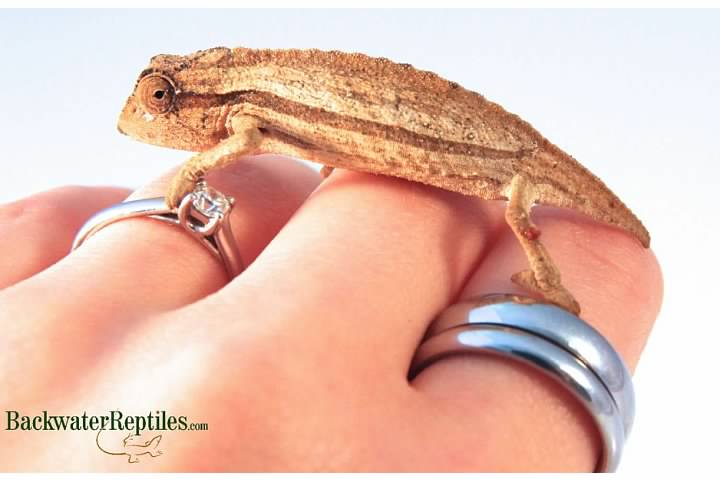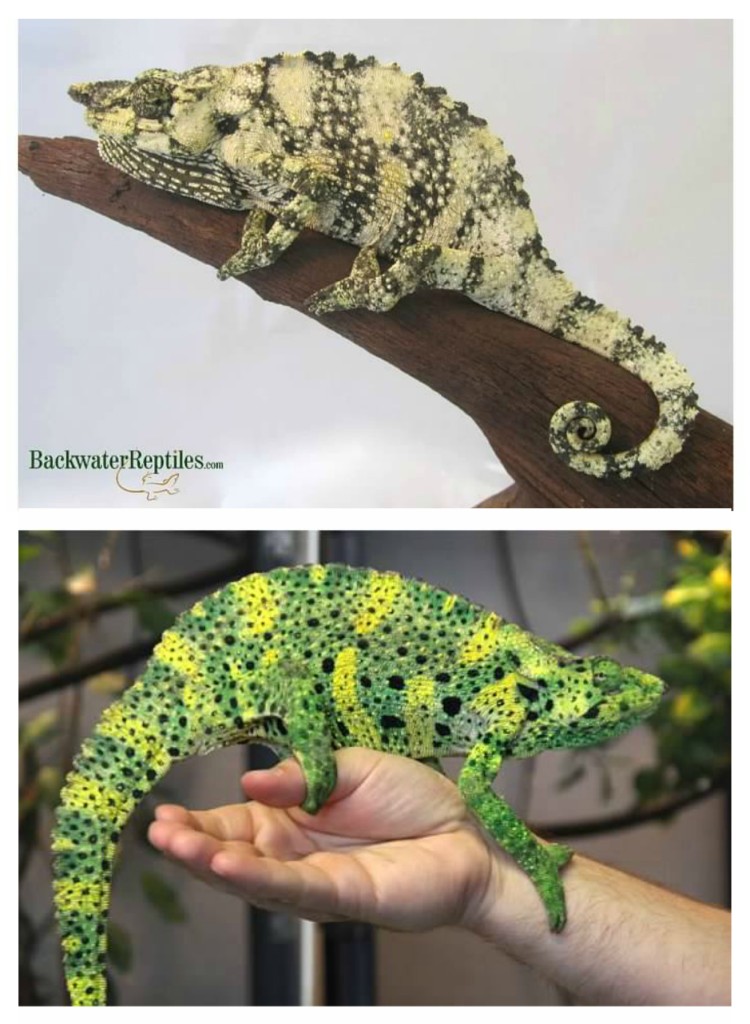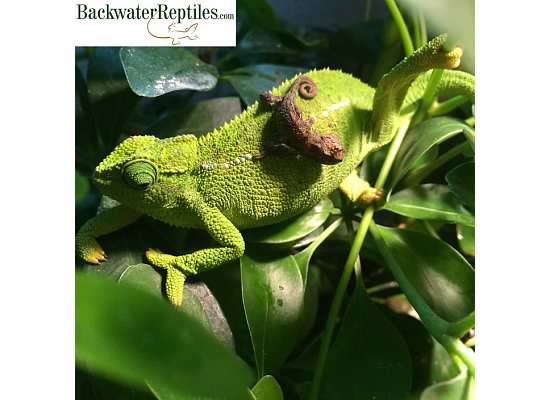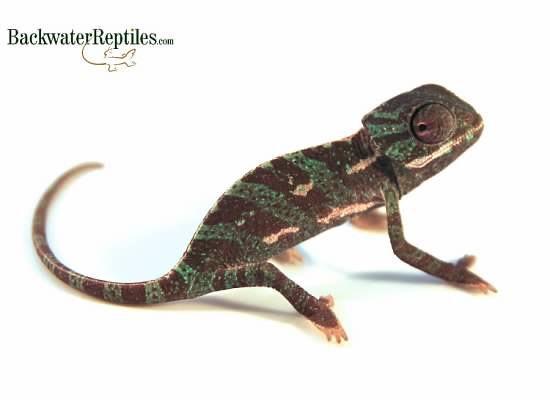Have you ever wondered why chameleons change color? We think it’s fascinating that these little lizards possess this ability and we wanted to shed a little light on the “why” behind this unique behavior.
Chameleon Camouflage
It’s a common misconception that chameleons change color primarily to blend in with their surroundings and avoid predators. While camouflaging with their surroundings is a positive byproduct of this behavior, there are actually stronger factors at work when it comes to color change.
While it is true that some species of chameleons, such as the Pygmy Chameleon (Rhampholean sp.) use color change as a way to blend in, this is a pretty specialized case. Pygmies actually don’t change color in the traditional spectrum – you won’t see a red, blue, or even bright green Pygmy. They change between light and dark shades of brown and are shaped to resemble dead leaf litter on the forest floor.

Another common erroneous belief is that a chameleon will change color to mimic it’s background. For instance, chameleons are commonly portrayed in pop culture as being able to rapidly transform themselves from green to purple to black and yellow stripes based on whatever they’re close to. This is not true.

Chameleon Mood
The foremost reason chameleons change color is to communicate their mood, whether it be to other chameleons, potential predators, or even to their owners.

A general rule of thumb when it comes to interpreting your chameleon’s color is that brighter colors mean a more dominant animal. For example, if two males to come into view of one another, they will both puff up and turn a brighter green in order to display aggression and try to defend their territory. They are both trying to communicate to the other that they are the head honcho and whoever is bigger and brighter is more likely to win should they come to blows in the wild.

Dark, drab chameleons can be this color for a number of reasons. One, is a physical response to light and temperature (see the subheading below on temperature and lighting for more details). The other could be because the animal is unhealthy. This is not always the case, as certain species just tend to be in the brown color spectrum naturally (Oustalet’s, Pygmies, and Elephant Ears to name a few), but if your Jacksons or Panther is consistently drab and brown, you need to adjust something in its care regimen, probably its light and/or heat source.
Female chameleons will change color to indicate that they are pregnant or receptive/non-receptive to a potential mate. Males will also display more brilliant colorations when they are trying to impress a female.
Lighting and Temperature
Have you ever noticed how wearing black in the summer is generally going to make you hotter? The black clothes absorb the sun’s rays more and the same is true of a darker-colored chameleon’s skin.
Reptiles cannot thermoregulate their body temperature the same way that mammals do, so they have lots of tricks up their sleeves to help them warm up when needed. Sometimes when a chameleon is very dark or drab in color, it could be trying to absorb more heat.

We hope that you learned something new by reading this article. If you’re inspired to purchase your own chameleon, Backwater Reptiles has many species of chameleons for sale on our website.
